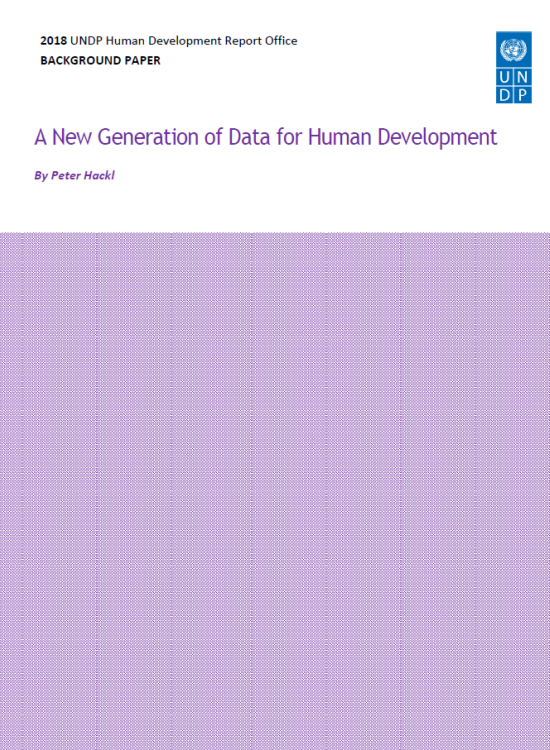A New Generation of Data for Human Development

Download Report by Language
Document
hacklfinal02.pdf
(1.12 MB)
Citation
Peter Hackl. 2018. A New Generation of Data for Human Development. New York.
A New Generation of Data for Human Development
Posted on: January 01, 2018
Human Development Reports have been annually published by the Human Development Report Office at the United Nations Development Programme (UNDP) since 1990. Discussion about the relevant dimensions of the Human Development Index (HDI), the appropriate way to measure human development and suitable data has not stopped since the design of the HDI. Over the years, substantial improvements have been achieved both in data relevance and quality. Nevertheless, the production of relevant data by national statistical authorities, the activities of the international data-collecting agencies, and the use of data in the production of the HDI and the various human development tables are still subject to serious challenges. Moreover, human development monitoring is expanding both in development dimensions and for special population groups like refugees and migrants, elderly people and others, increasing the scope and quality of data.
In the first part of the paper, the data actually used for human development monitoring are described, and the problems and limitations, including quality issues, are reported, indicating in particular areas that are problematic in the sense that countries have problems in providing these data. The second part deals with issues related to traditional data sources for human development monitoring. Countries may be unable to produce and deliver data due to limitations with respect to resources or competencies or other problems; only a modified version of an indicator may be reported due to problems of the country or due to adjustments of the data by the data collecting agency. Having these limitations and gaps in the availability of data in mind and being aware of the rapidly growing amount of data from all areas of human life, the question of interest is whether data from new sources, so-called alternative data or big data, are suited to supplement or substitute for data used for monitoring human development. The third part of the paper gives an outlook on potential measures for improving data for human development monitoring, with a focus on new and alternative data such as big data, and obstacles to their use. This part also discusses innovative visualization tools, and new ways to present data and statistical results.